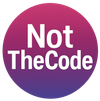The Context Gap: Why Smart Teams Still Miss the Mark
Even the best teams stumble when they don’t have the full picture. Context isn’t a nice-to-have—it’s what turns good decisions into the right ones.

Three months into our biggest product launch, Marcus delivered exactly what I asked for—and it was completely wrong. The feature worked perfectly, looked beautiful, and would have gotten us sued within a week.
He’d built a streamlined user registration flow that eliminated our email verification step. Its elegance and speed overshadowed three overlooked compliance violations.
And I couldn't blame him. He made the best call he could with the information he had. The problem was—I had the rest of the story, and I hadn't shared it.
Why Does Context Matters So Much?
This happens more often than we'd like to admit, especially now when teams are distributed, sprints are shorter, and decisions move faster than ever. People drift off course not because they're not good at their jobs, but because they're flying blind. We assume they know what we know. They don't.
One of the most underrated differences between leaders and individual contributors isn't talent or commitment. It's context.
Leaders usually sit closer to the fire—closer to shifting priorities, strategy conversations, and early signs of risk. We're in the Slack channels where decisions get made, the meetings where priorities shift, the email threads where clients change their minds. That extra visibility shapes our judgment. And it's exactly what your team needs to make better decisions, too.
When we don't share context, we force people to guess. And even the smartest, most thoughtful guesses can cost hours of rework or days of frustration.
Quick test: If someone on your team has said "I wish I'd known that earlier" in the past month, you have a context gap.
The Hidden Costs of Missing Context
Every misunderstanding due to missing context isn't just a one-off mistake. It creates ripples that compound, draining motivation, creating friction, and ultimately impacting morale.
I learned this the hard way when I spent a week optimizing our API response times, only to discover the real bottleneck was a third-party payment service we couldn't control. My manager knew this—I just never asked. A simple "Hey, before you dive in, you should know..." would have saved us both the frustration.
How Good Teams Close the Gap
But when we do bring people into the "why"—when we connect the dots instead of just handing off tasks—everything changes. Teams make sharper choices. They challenge things when they should. They help spot risks before they blow up.
Context-sharing isn't a chore to check off your leadership list. It's a vital tool for empowerment. When your team sees the bigger picture, they don't just follow orders; they contribute ideas, solutions, and improvements you might never have considered alone.
This brings me to a deeper point: the best teams don't just take orders. They co-pilot. But they can't do that if we're the only ones who see the map.
And no—context doesn't need to come wrapped in a meeting no one wants to be in.
You can do this in small, simple ways:
Narrate your thinking as you go. Explain your reasoning, even briefly. "I'm prioritizing the mobile fix because we're seeing 60% of our traffic there."
Forward the messy email thread instead of summarizing it. Let them see the context firsthand. Sometimes the tone and back-and-forth matters as much as the conclusion.
Drop a quick voice note saying, "Here's what's driving this." Thirty seconds of background can prevent thirty minutes of confusion.
Make it clear that asking for context isn't just okay—it's expected. Create an environment where "What's the bigger picture here?" is a normal, valued question.
The last time I consciously shared extra context—explaining that we were rushing a fix because a major client demo was happening Friday—the developer immediately suggested a simpler workaround that bought us time for a proper solution later. Small efforts like these add up to big savings in clarity and confidence.
Make Context Sharing a Habit
Random acts of context-sharing won't create the lasting impact you want. Instead, build it into your workflow:
Include context in your task assignments. Not just what and when, but why now and why it’s important. "Fix the checkout bug" becomes "Fix the checkout bug—we're seeing a 15% drop-off rate and the sales team is getting heat from prospects."
Hold quick weekly syncs dedicated solely to context updates. Fifteen minutes max. No status reports, just "Here's what you should know about what's coming."
Encourage your team to proactively ask, "What's the context here?" when they sense ambiguity. Make it a team norm, not a sign of confusion.
Know when NOT to share. Context overload is real. Skip the details that would overwhelm rather than inform. The goal is clarity, not information dumping.
When context sharing becomes routine, clarity becomes the norm. People feel respected, trusted, and equipped to act with confidence rather than caution.
Your Monday Morning Move
Tomorrow morning, before assigning your next task, pause and ask yourself: "What's the most important thing my teammate doesn't know yet?"
Then write it down. If you can't think of anything, you're probably missing something important yourself.
Better question: What's something your team is working on right now? And what piece of context might still be stuck in your head?
Because right now, someone on your team is making a decision with incomplete information. The question isn't whether this is happening—it's whether you're going to do something about it.
